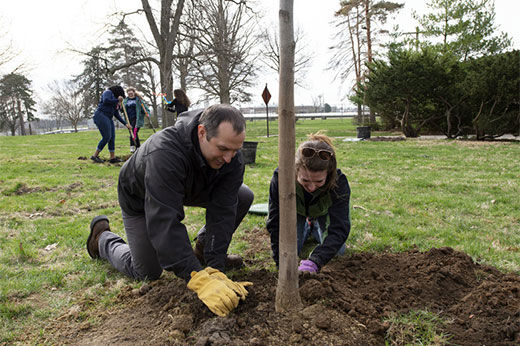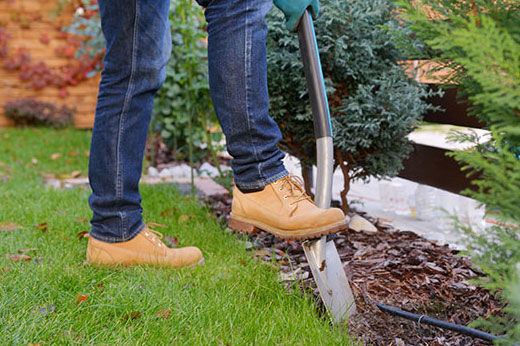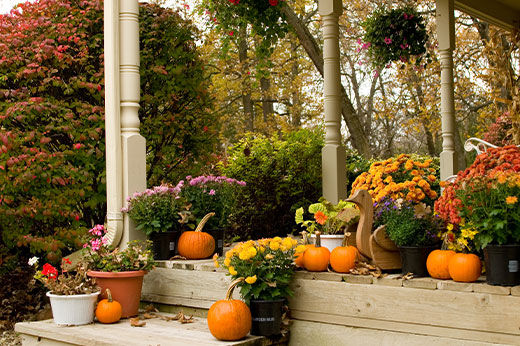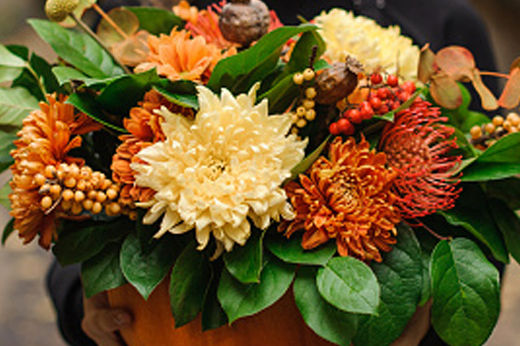How to Get Leaves out of Mulch

Mulch is one of the top tools for keeping your home landscape looking neat and growing well all year round. Not only does a layer of bark or straw hold moisture in the soil for steady plant growth, but it also provides a cleaner look and prevents soil from blowing around and becoming dust. However, the arrival of fall each year likely results in a large load of leaves falling and covering your carefully selected mulches. Leaving the leaves in place can prevent water from reaching the soil and makes for a messy look. Yet the best trick for getting the leaves out while leaving the mulch in place largely depends on the type of mulch. Stone and rubber mulch are usually the easiest to separate, with straw mulch being the hardest. There’s a technique for separating out those unwanted leaves no matter the mulch, but no matter the method, you’ll need to stay on top of the process and not let too many leaves build up.
Using a Leaf Blower
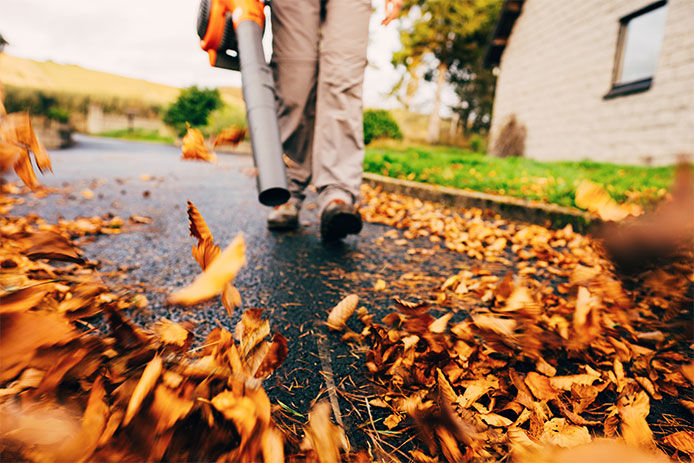
The easiest and quickest way to keep mulch leaf-free is to pull out the leaf blower once a week until fall ends. It’s a little noisy, but leaf blowing quickly separates loose leaves from bark, rubber, and stone mulch in a hurry. There’s no need to bend down except for the rare stubborn leaf. It’s less effective on straw mulch because it tends to scatter it as well. To control where the leaves go, use the low power setting and angle the tip around 25 degrees from the ground. This keeps the debris from flying up and scattering.
Vacuuming the Leaves
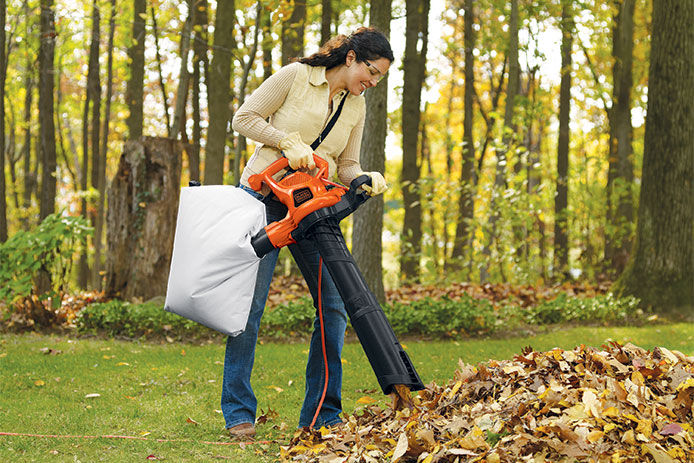
You’ll still need special equipment for this method, but vacuuming instead of blowing usually gives you more control over where the leaves end up. It can also go a little slower for that reason, and you may suck up some amount of lighter mulch like straw or small bark. However, all that material can be composted along with the leaves and returned to the bed to top up the soil and enrich it. That fact alone may make vacuuming the leaves more appealing than blowing them into a pile and bagging them.
Relying on a Rake
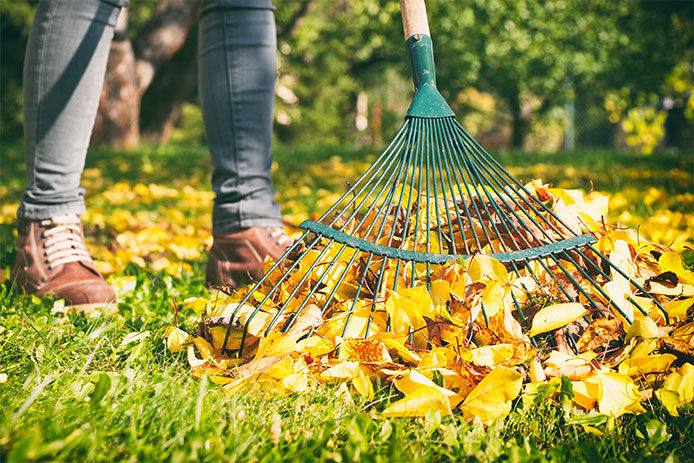
Rakes are the traditional way to control leaves on a lawn, and they can work for mulched beds, too, with some care. It’s easy to rake up leaves between widely spread shrubs, trees, or plants rather than tightly packed flower beds. Try an adjustable rake that lets you narrow its width to get between smaller plants without damaging them. Don’t let the leaves build up to cover plants entirely, or you may end up raking them out as well. Look for a spring-tine rake rather than a hard-tooth tool so that only leaves are lifted and not the heavier mulches. This method can work well even for straw mulched beds due to the difference in leaf and straw textures.
Removing Leaves by Hand

For tightly planted areas with delicate plants, only hand removal will do. Simply commit to spending a few minutes each day picking up leaves until the leaf drop has ended. You may only need to focus on the beds for a few days at peak leaf drop since they’re unlikely to be covered in leaves dropped by trees all the way across the yard. By keeping leaves controlled in lawn areas as well so that they don’t blow around, you only need to pick up the debris that actually drifts down onto the beds.
Lay Down a Barrier
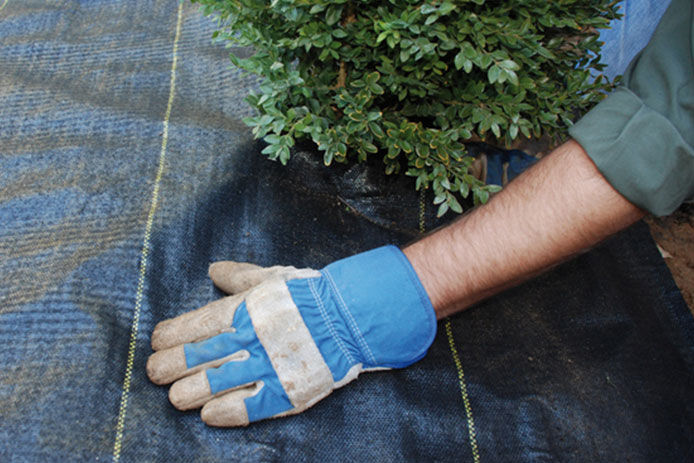
To keep areas leaf-free without tedious hand-picking, try stretching out a layer of thin landscaping weed barrier over the tops of mulched beds. The material is thin enough to rest on top of even delicate bedding plants without crushing them, but it’ll catch the leaves dropped by the trees. Try having the fabric on the beds at night and removing the fabric and leaves into a pile each day so the plants can still have some sunlight during the day. For the heaviest part of the leaf drop each fall, you can usually keep the fabric on the plants for a few days in a row without harming them.
Shred or Compost the Leaves

Once you’ve collected your leaves, you don’t necessarily have to bag them and drop them by the curb. Instead of a risky bonfire, try composting the leaves to make a rich organic material known as leaf mold. It’s rich in nutrients and helps loosen soil and hold water around plant roots. Shredding the leaves speeds up the process, but piling the material in a three-sided compost bin will also work. This allows you to return all that material to the beds the next time you’re refreshing the mulch or soil.
Leaves can be a resource rather than a bother, so make the most of them after spending your time collecting them from your beds. Choose heavier mulches if you have a lot of deciduous trees on your property so that you don’t have to spend so much time picking the leaves out of the beds.
